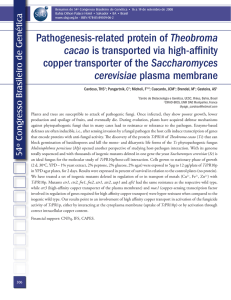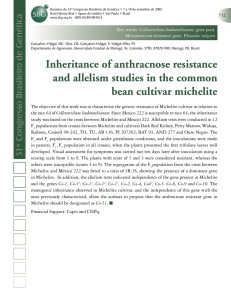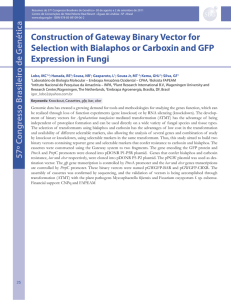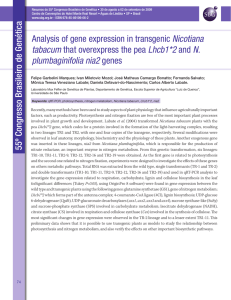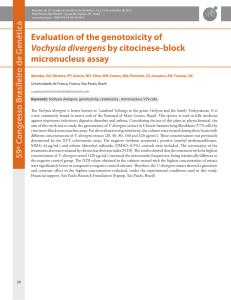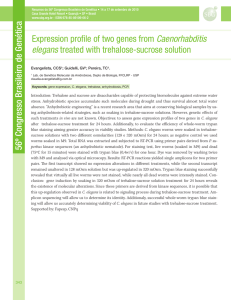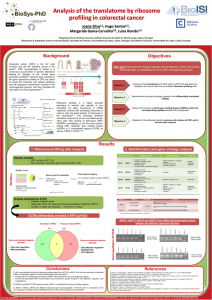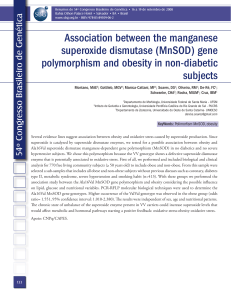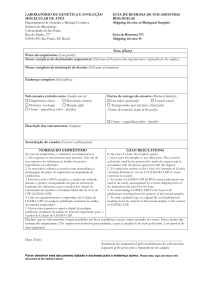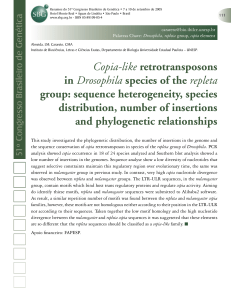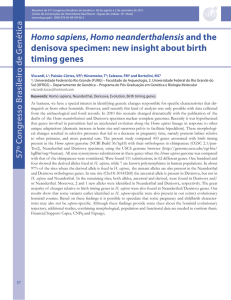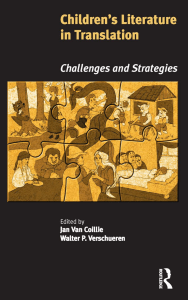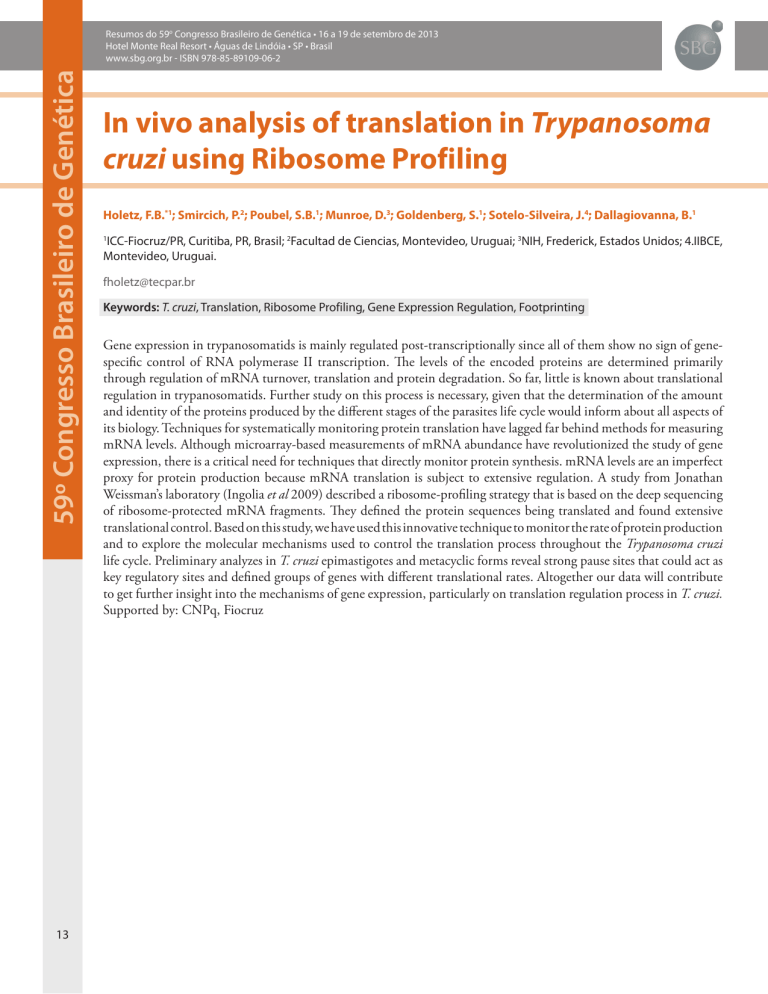
59º Congresso Brasileiro de Genética
Resumos do 59o Congresso Brasileiro de Genética • 16 a 19 de setembro de 2013
Hotel Monte Real Resort • Águas de Lindóia • SP • Brasil
www.sbg.org.br - ISBN 978-85-89109-06-2
13
In vivo analysis of translation in Trypanosoma
cruzi using Ribosome Profiling
Holetz, F.B.*1; Smircich, P.2; Poubel, S.B.1; Munroe, D.3; Goldenberg, S.1; Sotelo-Silveira, J.4; Dallagiovanna, B.1
ICC-Fiocruz/PR, Curitiba, PR, Brasil; 2Facultad de Ciencias, Montevideo, Uruguai; 3NIH, Frederick, Estados Unidos; 4.IIBCE,
Montevideo, Uruguai.
1
[email protected]
Keywords: T. cruzi, Translation, Ribosome Profiling, Gene Expression Regulation, Footprinting
Gene expression in trypanosomatids is mainly regulated post-transcriptionally since all of them show no sign of genespecific control of RNA polymerase II transcription. The levels of the encoded proteins are determined primarily
through regulation of mRNA turnover, translation and protein degradation. So far, little is known about translational
regulation in trypanosomatids. Further study on this process is necessary, given that the determination of the amount
and identity of the proteins produced by the different stages of the parasites life cycle would inform about all aspects of
its biology. Techniques for systematically monitoring protein translation have lagged far behind methods for measuring
mRNA levels. Although microarray-based measurements of mRNA abundance have revolutionized the study of gene
expression, there is a critical need for techniques that directly monitor protein synthesis. mRNA levels are an imperfect
proxy for protein production because mRNA translation is subject to extensive regulation. A study from Jonathan
Weissman’s laboratory (Ingolia et al 2009) described a ribosome-profiling strategy that is based on the deep sequencing
of ribosome-protected mRNA fragments. They defined the protein sequences being translated and found extensive
translational control. Based on this study, we have used this innovative technique to monitor the rate of protein production
and to explore the molecular mechanisms used to control the translation process throughout the Trypanosoma cruzi
life cycle. Preliminary analyzes in T. cruzi epimastigotes and metacyclic forms reveal strong pause sites that could act as
key regulatory sites and defined groups of genes with different translational rates. Altogether our data will contribute
to get further insight into the mechanisms of gene expression, particularly on translation regulation process in T. cruzi.
Supported by: CNPq, Fiocruz

